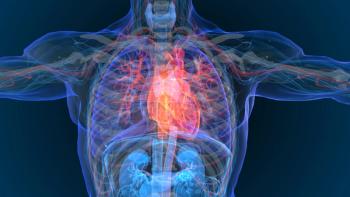
Expert: Data from Opioid-Related Activities in Academic Pharmacy Show the Value of Pharmacists’ Efforts to Fight the Opioid Epidemic
Thomas Maggio, MBA, public affairs and engagement manager at AACP, discussed his presentation assessing the Opioid-Related Activity Database and its impact in showing the efforts of pharmacists and student pharmacists to fight the opioid epidemic.
Pharmacy Times interviewed Thomas Maggio, MBA, public affairs and engagement manager at American Association of Colleges of Pharmacy (AACP), to discuss his presentation titled Opioid-Related Activities in Academic Pharmacy at the AACP 2021 conference.
Alana Hippensteele: What is the Opioid-Related Activity Database, and why was it launched?
Thomas Maggio: The AACP launched the database because the opioid epidemic is a significant health crisis that's affecting all communities, and we noticed that there was no unified collection of relevant activities undertaken by academic pharmacy.
The database itself is a collection of opioid-related activities being conducted at all colleges and schools of pharmacy across the country, and the purpose is to inform the pharmacy profession and other stakeholders about these efforts and provide direction and insight to those looking to launch their own activities to address the opioid epidemic.
It started in July of 2018, that's when AACP made the official call to our member colleges at schools of pharmacy to share information on all opioid-related activities that they're conducting. By the fall of 2018, we received over 415 submissions. After we receive all those submissions, a team of AACP staff members and volunteer members from the substance use disorder special interest group began coding those submissions.
So, coding involved putting each activity into multiple categories, those categories are education, research, service, practice, and advocacy. Then AACP also developed 50 plus tags to refine the coding process.
Finally, in February of 2019, AACP launched the searchable opioid-related activity database with all those activities included.
Alana Hippensteele: What are some of the activities at pharmacy schools that the database was able to highlight?
Thomas Maggio: We've highlighted multiple activities in our executive summaries, in our database poster that we share at meetings, and then in other publications.
Some good examples are from Ohio Northern University. They direct a mobile clinic that provides an entry point into the health care system for people at risk for substance abuse and those with behavioral health concerns among the medically underserved communities in their area.
By using a multidisciplinary team of student health care providers under the supervision of a licensed professional, this project was able to provide initial assessment, intervention, referral, and follow-up care for these communities.
Regarding the opioid epidemic specifically, the mobile clinic had 4 goals. The goals were to provide an entry into the health care system for the underserved people in the area, connect individuals with substance abuse and behavioral health concerns to specialized treatment services, provide case management following initial substance abuse and behavioral health treatment to improve treatment adherence and reduce disease reoccurrence, and then finally to provide preventative health education on substance abuse to junior and senior high school students and the general public in that area.
Another activity that we wanted to highlight was by the University of Texas at Austin, which we included in our 2020 executive summary. We highlighted it because at the end of the activity, it provided statistical results of the direct impact that the activity had.
The University of Texas at Austin, they're a primary provider of statewide opioid overdose prevention training, as well as naloxone distribution in Texas. It also provides continuing education for health care professionals.
So, through this opioid overdose prevention training, about 1900 Texans have been trained to prevent overdose, 20,000 doses of naloxone have been distributed, and 146 successful overdose reversals have been reported, although the number with the actual is probably likely higher. Additionally, through online continuing education, 767 pharmacists and technicians, 62 physicians and other prescribers, and 146 behavioral health professionals have been trained.
Then the last activities that we want to highlight, it's more of a broader group of activities, and those are the ones that we have tagged with Generation Rx. So, these activities are vital because it shows the impact that student pharmacists and future pharmacist practitioners have on the opioid epidemic, and currently there are about 27 Generation Rx activities in the database.
Alana Hippensteele: Wow, that's amazing. What kind of research has been conducted to understand and assess some of this data that has been compiled through the database?
Thomas Maggio: Multiple research points provide insight into the database. So, at AACP, I keep track of a variety of statistics as we add new activities.
Those statistics range from category breakdown, activity count, tag count, whether the institution is public versus private, the program type as to whether it's traditional or accelerated, and then activities per institution we also keep track of.
Then in addition to that, a group of AACP members have been working on a research paper regarding the database. So, this is that same group of members from the substance use disorder that helped label with the initial coding.
So, their goal for the manuscript is to provide an in-depth qualitative analysis of the 5 main categories, which were education, research, service practices, and advocacy, as well as identify strengths, gaps, and additional needs of academic pharmacy programs based on the reported activities in the database.
Then finally, they want to inform a manuscript for AJPE detailing the findings, the implications, and the steps for meeting needs identified through the analysis. Then one last thing, as far as the research goes, several student pharmacists have conducted research utilizing the database. So, these student pharmacists presented their training abstracts at the AACP annual meeting in 2020 and 2021.
Alana Hippensteele: What were some of the findings of some of this research? I know that there's been a wide array of focuses, but are there any findings of the research analyzing this data that might be good to highlight?
Thomas Maggio: Sure. So, I'll break that down into 2 categories: the statistical findings that AACP does and the findings that that research team found.
So, currently there's about 467 activities in the database, so it has continually grown since the initial launch. I know we saw a slew of activity submitted during last year because of COVID-19, but hopefully we're going to start seeing an uptick in submissions.
As far as the category breakdown goes, so activities can fall into multiple categories, they don't just have to fall into one, so they can be education and service. So, in total, we have 305 education activities, 118 research, 112 service, 34 practice, and 17 advocacy.
We also have activities represented in 45 states, including DC and Puerto Rico. It was a pretty even split of public schools versus private schools. We have 56 public and 58 private, and then we have a 104 traditional programs represented, a 100 traditional programs represented, and 14 accelerated programs.
Then, as far as the tags go, we have 50 tags. I’ll go through the top 5 that I used. We have student pharmacists, substance use disorder, naloxone, didactic, and then substance use disorder treatment.
So, some of the emergent findings from the paper were using these strengths gaps and needs, finding what those are. So, they found that the strengths lie in education in activities that were interprofessional and community-based. Under community service, naloxone access and drug disposal was found to be a strength, and then also just overall through the database partnerships with local health departments.
Some gaps that were identified were harm reduction beyond naloxone. So, we tagged any service activity that was categorized service that had naloxone was also tagged with harm reduction because that is the ultimate goal of that. But a gap was harm reduction beyond naloxone tags.
Another gap was experiential education opportunities and community-based research and practice. Then finally, the needs were schools need resources for advanced training, and then policy changes to enable pharmacists to play a substantial role in harm reduction.
Alana Hippensteele: Okay, and why are some of these findings important to academic pharmacy more broadly speaking?
Thomas Maggio: The strengths gaps and needs all provide findings for academic pharmacy. The strengths show that activities that are prevalent in the database, so institutions that may be lacking in these types of activities—they can use the database for direction and insight. The gaps and needs show where there is room for improvement.
However, knowing these gaps and needs is beneficial because it allows colleges and schools of pharmacy, as well as AACP, to focus their efforts to address them in the future. These findings also provide opportunities for collaboration between colleges and schools of pharmacy within their own state and showcase the role of student pharmacists to help combat the opioid crisis in their community.
Alana Hippensteele: How could the research findings potentially impact the future of how pharmacy schools approach opioid-related activities in the academic sector?
Thomas Maggio: So, research findings can only help. It shows the value that colleges and schools of pharmacies bring to their communities and the impact of the work and efforts of the student pharmacists. Knowing they're addressing an issue and that it is working will only grow confidence in student pharmacists and show the value that pharmacists have across the country.
The gaps in needs identify areas of growth to continue providing additional training to student pharmacists and practicing pharmacists, as well as educating the communities. So, by addressing these, they'll be able to expand their programs and reach their communities in a way that they haven't been able to in the past.
Alana Hippensteele: Yeah, thank you so much for taking the time to speak with me today, Thomas.
Thomas Maggio: Oh no problem, thank you.
Newsletter
Stay informed on drug updates, treatment guidelines, and pharmacy practice trends—subscribe to Pharmacy Times for weekly clinical insights.




















































































































































































































